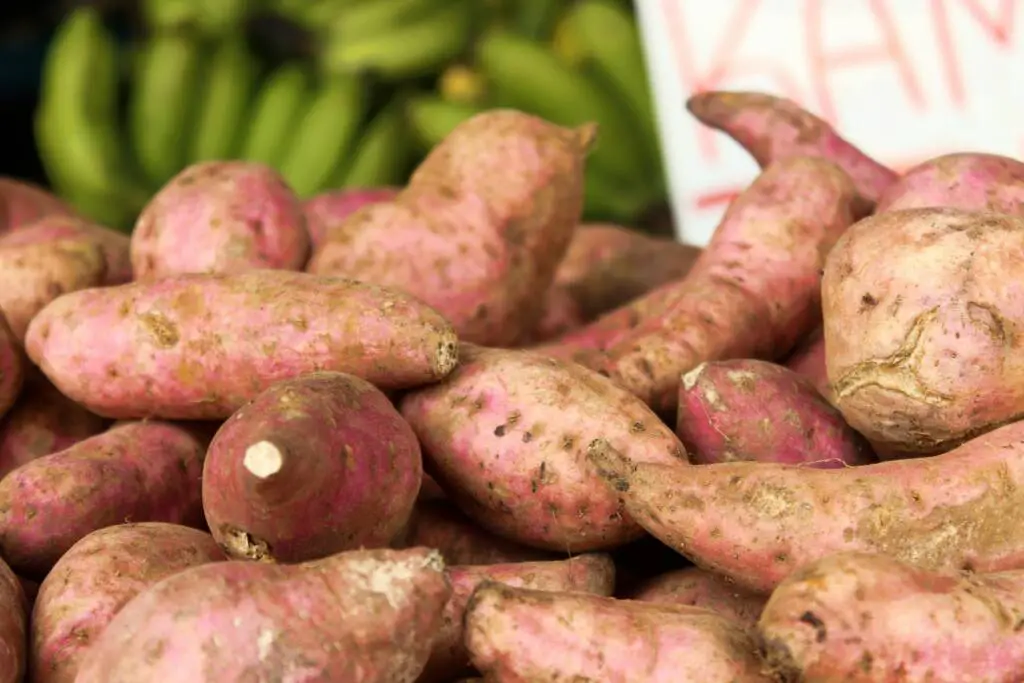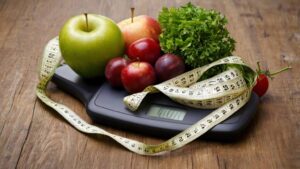Nutrition Tips for a Shapelier Backside

Welcome to the world of glute gains! Many people dream of having a stronger and shapelier backside, and it’s no secret that exercise plays a significant role in achieving this goal. However, nutrition also plays a crucial part in building and maintaining strong glutes. In this article, we will be diving into nutrition tips for a shapelier backside. From the basics of macronutrients to the best foods for the glutes and the role of supplements, we’ve got you covered. So let’s get started and learn how to sculpt those glutes for a firmer and more defined backside.
The aim of this article is to educate and provide valuable insights on how to enhance your glute workouts with proper nutrition. We will be discussing the importance of macronutrients in glute development, the best foods to incorporate into your diet, and how to maximize your results with glute activation and effective workout tips. By the end of this article, you will have a better understanding of how to nourish your body for a stronger, shapelier, and healthier backside. So let’s dive in and unlock those glute gains!
Understanding the Science Behind Glute Development
The glute muscles, also known as the gluteus maximus, medius, and minimus, play a crucial role in overall body strength and shape. These muscles are responsible for hip extension, rotation, and abduction, making them essential for movements such as walking, running, and squatting. However, strong and shapely glutes are not solely achieved through exercise; proper nutrition is also vital.
A balanced diet consisting of all three macronutrients – protein, carbohydrates, and fats – is necessary for optimal glute development. Proteins are the building blocks for muscle growth, while carbohydrates provide the energy needed for workouts, and healthy fats aid in hormone production. Balancing caloric intake with exercise is also crucial for achieving glute gains. Furthermore, neglecting proper nutrition can hinder glute development and lead to imbalances in other muscle groups. Understanding the science behind glute development and the importance of nutrition can help individuals achieve a stronger and shapelier backside.
The Basics
Proper nutrition is essential for optimal glute development. The three main macronutrients – protein, carbohydrates, and fats. Play a crucial role in building and maintaining strong glutes. Protein is responsible for repairing and building muscle tissue, while carbohydrates provide the energy needed for intense workouts. Healthy fats aid in hormone production and help to regulate metabolism.
For optimal results, it is recommended to consume 0.8-1 gram of protein per pound of body weight, 2-3 grams of carbohydrates per pound of body weight, and 0.4-0.5 grams of healthy fats per pound of body weight. Good sources of protein include lean meats, eggs, and legumes, while complex carbohydrates can be found in foods such as sweet potatoes, quinoa, and brown rice. Healthy fats can be found in foods like avocados, nuts, and olive oil. It is important to balance caloric intake with exercise to avoid excess fat gain.
The Best Foods for Glutes
When it comes to achieving optimal glute development, nutrition plays a crucial role. Incorporating the right foods into your diet can provide your glutes with the necessary nutrients for growth and strength. Some of the best foods for glute gains include lean protein sources such as chicken, fish, and tofu. These foods provide essential amino acids for muscle repair and growth.
Complex carbohydrates, such as sweet potatoes and quinoa, can also aid in glute development by providing energy for workouts. Healthy fats, like avocados and nuts, help maintain hormone balance and support muscle growth. Incorporating a variety of these foods into your diet will provide balanced nutrition for glute gains. Don’t forget to also hydrate with plenty of water and incorporate fruits and vegetables for added vitamins and minerals.
Enhancing Glute Development with Supplements
In addition to proper nutrition and exercise, supplements can play a crucial role in enhancing glute development. They provide an extra boost of essential nutrients that may be lacking in one’s diet, promoting optimal muscle growth and repair.
When it comes to glute gains, protein powders and branched-chain amino acids (BCAAs) are two supplements that can be particularly helpful. Protein powders provide a convenient and efficient source of protein, which is essential for building and repairing muscle tissue. BCAAs, on the other hand, can aid in muscle recovery and reduce muscle soreness after intense workouts.
It is important to note that supplements should not be relied upon as a replacement for a healthy diet and exercise. They should be used as a complementary tool to help achieve optimal glute development. As with any supplement, it is crucial to consult with a healthcare professional before incorporating them into your routine.
Tips for Effective Glute Workouts
Exercise is a crucial component in achieving strong and shapelier glutes. Here are some tips to ensure effective glute workouts:
1. Proper form and technique: Focus on engaging the glute muscles during exercises such as squats, deadlifts, and lunges. This will help target the glutes and prevent injury.
2. Incorporate weightlifting and body weight exercises: A combination of both can help build and shape the glutes. Weightlifting can be done with barbells, dumbbells, or resistance bands, while bodyweight exercises like glute bridges and donkey kicks can be done at home.
3. Vary your workouts: Don’t stick to the same exercises every time. Mix it up by trying different variations and incorporating new movements to challenge your glutes.
4. Increase weight and resistance gradually: As you get stronger, gradually increase the weight or resistance in your exercises to continue challenging and building your glutes.
5. Don’t forget about rest and recovery: Give your glutes time to rest and recover between workouts. This will allow them to repair and grow stronger.
Remember, consistency is key when it comes to effective glute workouts. Stay dedicated and be patient for optimal results.
Maximizing Glute Gains with Glute Activation
Glute activation is a crucial step in achieving maximum glute gains. This technique involves specifically targeting and engaging the glute muscles to ensure they are activated and ready to work during exercise. Not only does this help in building stronger and shapelier glutes, but it also prevents potential injuries.
Some effective glute activation exercises include glute bridges, clamshells, and fire hydrants. These exercises can be done before and during workouts to activate the glutes and ensure they are properly engaged during exercises such as squats and lunges.
Incorporating glute activation into your routine can also help in improving your mind-muscle connection and overall muscle recruitment, leading to better results. So don’t skip this important step and make sure to activate those glutes before every workout for maximum gains.
Maintaining Glute Health and Preventing Injury
Proactive care is crucial for maintaining strong and healthy glutes and preventing injury.
Here are some tips to help keep your glutes in top shape:
1. Rest and Recovery: It’s important to give your glutes time to rest and recover between workouts. Overtraining can lead to injury and hinder glute development.
2. Proper Stretching: Stretching is essential for preventing injury and maintaining flexibility in the glutes. Incorporate dynamic and static stretches into your routine to keep your glutes flexible and mobile.
3. Foam Rolling: Using a foam roller can help release tension in the glutes and improve blood flow. Incorporate foam rolling into your warm-up and cool-down routines to prevent injury and aid in muscle recovery.
4. Listen to Your Body: Pay attention to any discomfort or pain in your glutes. If something doesn’t feel right, it’s important to take a break and make adjustments to your workout routine as needed.
By following these tips and incorporating rest and recovery into your routine, you can maintain the health and strength of your glutes and continue to see progress in your glute gains journey. Don’t forget to consult with a healthcare professional if you experience any persistent pain or discomfort in your glutes. Remember, a healthy and injury-free glute is essential for achieving a stronger and shapelier backside.
Conclusion
Achieving strong and shapelier glutes requires a combination of proper nutrition, exercise, and rest. By understanding the science behind glute development and incorporating the right foods and supplements into your diet, you can enhance your glute gains. It is also important to perform effective glute workouts with proper form and activation techniques. Additionally, taking care of your glutes through rest and recovery will not only prevent injury but also aid in overall glute development. Remember to listen to your body and make necessary adjustments to your routine. With dedication and consistency, you can build a stronger backside and achieve the glute transformation you desire. Start incorporating these expert nutrition tips into your routine today, and watch your glutes become stronger and more sculpted than ever before.
https://7thavewellnessblog.com/?p=4255
https://www.ncbi.nlm.nih.gov/
FAQs
Q: What role does fat play in achieving a bigger butt?
A: Healthy fats, like those found in avocados and salmon, are essential for muscle synthesis and overall buttock tone.
Q: How can diet and exercise help in making your butt bigger?
A: A combination of a diet rich in protein and healthy fats, along with targeted exercises like squats and lunges, can help you achieve a bigger and toned butt.
Q: Which foods are recommended for a bigger butt without gaining excess body fat?
A: Foods high in protein, such as salmon and lean meats, along with complex carbohydrates like sweet potatoes, can help grow your butt while maintaining a balanced body composition.
Q: What is the importance of muscle building in getting a bigger butt?
A: Muscle-building exercises, combined with a diet high in quality protein, are essential for increasing muscle mass in the buttocks and achieving a bigger butt without excess body fat.
Q: How can a diet rich in carbohydrates help in getting a bigger butt?
A: Complex carbohydrates are crucial for muscle recovery and growth, which are necessary for building a toned and shapelier butt.






